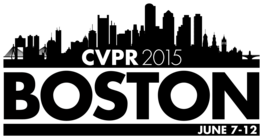-
Notice of Violation of IEEE Publication Principles: Dual Domain Filters Based Texture and Structure Preserving Image Non-Blind Deconvolution
AbstractThe following message is relayed from an update made on IEEE Xplore. Notice of Violation of IEEE Publication Principles "Dual Domain Filters Based Texture and Structure Preserving Image Non-Blind Deconvolution" by Hang Yang, Ming Zhu, Yan Niu, Yujing Guan, and Zhongbo Zhang in the Proceedings of the IEEE Conference on Computer Vision and Pattern Recognition (CVPR), June 2015, pp. 705-713 After careful and considered review of the content and authorship of this paper by a duly constituted expert committee, this paper has been found to be in violation of IEEE’s Publication Principles. This paper copied portions of text from the papers cited below. The original text was copied without attribution (including appropriate references to the original author(s) and/or paper titles) and without permission. "Group-Based Sparse Representation for Image Restoration" by Jian Zhang, Debin Zhao, and Wen Gao in the IEEE Transactions on Image Processing, Vol 23, No 8, August 2014, pp. 3336-3351 "Dual-domain Image Denoising" by Claude Knaus, Matthias Zwicker in the Proceedings of the IEEE International Conference on Image Processing, (ICIP), September 2013, pp. 440-444 "A Machine Learning Approach for Non-blind Image Deconvolution" by Christian Schuler, Harold Christopher Burger, Stefan Harmeling, and Bernhard Scholkopf in the Proceedings of the IEEE Conference on Computer Vision and Pattern Recognition (CVPR), June 2013, pp. 1067-1074 Image deconvolution continues to be an active research topic of recovering a sharp image, given a blurry one generated by a convolution. One of the most challenging problems in image deconvolution is how to preserve the fine scale texture structures while removing blur and noise. Various methods have been implemented in both spatial and transform domains, such as gradient based methods, nonlocal self-similarity methods, sparsity based methods. However, each domain has its advantages and shortcomings, which can be complemented by each other. In this work we propose a new approach for efficient image deconvolution based on dual domain filters. In the deblurring process, we offer a hybrid method that a novel rolling guidance filter is used to ensure proper texture/structure separation, and then in the transform domain, we use the short-time Fourier transform to recover the textures while removing noise with energy shrinkage. Our hybrid algorithm that is surprisingly easy to implement, and experimental results clearly show that the proposed algorithm outperforms many state-of-the-art deconvolution algorithms in terms of both quantitative measure and visual perception quality.
Related Material
[pdf][bibtex]@InProceedings{Yang_2015_CVPR,
author = {Yang, Hang and Zhu, Ming and Niu, Yan and Guan, Yujing and Zhang, Zhongbo},
title = {Notice of Violation of IEEE Publication Principles: Dual Domain Filters Based Texture and Structure Preserving Image Non-Blind Deconvolution},
booktitle = {Proceedings of the IEEE Conference on Computer Vision and Pattern Recognition (CVPR)},
month = {June},
year = {2015}
}
These CVPR 2015 papers are the Open Access versions, provided by the Computer Vision Foundation.
Except for the watermark, they are identical to the accepted versions; the final published version of the proceedings is available on IEEE Xplore.
Except for the watermark, they are identical to the accepted versions; the final published version of the proceedings is available on IEEE Xplore.
This material is presented to ensure timely dissemination of scholarly and technical work.
Copyright and all rights therein are retained by authors or by other copyright holders.
All persons copying this information are expected to adhere to the terms and constraints invoked by each author's copyright.

